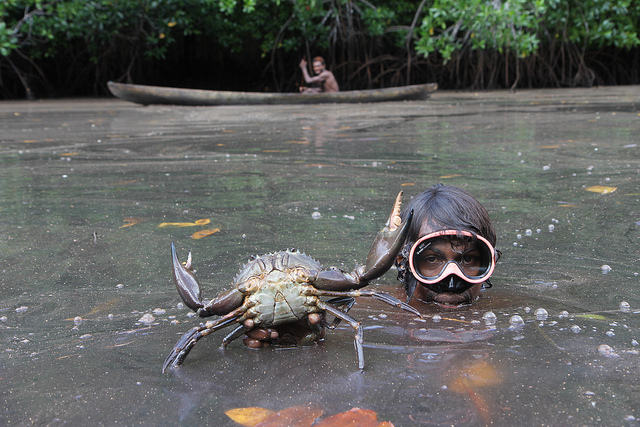The Pacific islands’ fisheries sector is under serious threat from the changing climate. Increases in extreme weather events, erratic rainfall, intense solar radiation, rising sea surface temperatures and sea levels, and ocean acidification are degrading the region’s mangrove and coral reef ecosystems and fisheries, and harming fish production. Fish are the region’s primary protein source, so rural communities—especially coastal communities—that rely on farming and fishing for subsistence and incomes face serious risks to their health and livelihoods.
A new research study shows that the Pacific islands’ future demand for fish can be addressed by scaling up aquaculture production, and coupling it with climate adaptation and environmental protection measures.
The study by IFPRI—Climate Change and Development Strategies for the Coastal Communities of the Pacific Coral Triangle Countries—examined four countries: Fiji, Solomon Islands, Timor-Leste, and Vanuatu in 2011-2013. It was part of an ADB regional technical assistance initiative to strengthen the capacity of national and local governments to manage coastal and marine resources and improve food security by increasing ecosystem resilience.
Pacific island countries face a dire predicament. With rising per capita income and population, demand for fish and seafood is expected to increase substantially up to 2050. With no intervention, fish exports from the four countries are expected to decrease, while fish imports are expected to increase. This will threaten food security.
The study shows that promoting aquaculture can help raise aggregate fish production, consumption, and trade. However, starting from a low base level of production, aquaculture development alone will not be able to meet these countries’ growing fish demand.
The study recommends a more systematic approach, including a variety of climate adaptation strategies. Aquaculture should be expanded cost-effectively. Investments to improve storage and transportation facilities will help make marketing value chains more efficient, improving profitability for fishers, and quality and price for consumers. Low-cost fish aggregating devices offer a mechanism for subsistence and for small-scale fishers to access oceanic species, and provide a good way to augment domestic supplies of tuna and similar species. Encouraging communities to adopt natural resource management strategies such as marine protected areas will also help expand the stock and catch of fish.
While some of these strategies are currently practiced in these countries, and economic modeling shows they can yield substantial economic gains and improvements in food security, dramatically increasing their present scale is critical to obtaining the level of production necessary to meet future demand for food and trade. Climate change adaptation strategies and policies should also be formulated according to the priorities of national governments, and tailored to meet the needs of coastal communities.
While climate change poses grave threats to the Pacific islands’ food security, the study shows the situation is far from hopeless. With the right mix of economic and environmental policies and with appropriate scale, communities that depend on coastal resources for survival and growth can not only endure, but thrive.
Mark Rosegrant is Director of IFPRI’s Environment and Production Technology Division. This post originally appeared on the Asian Development Blog.







